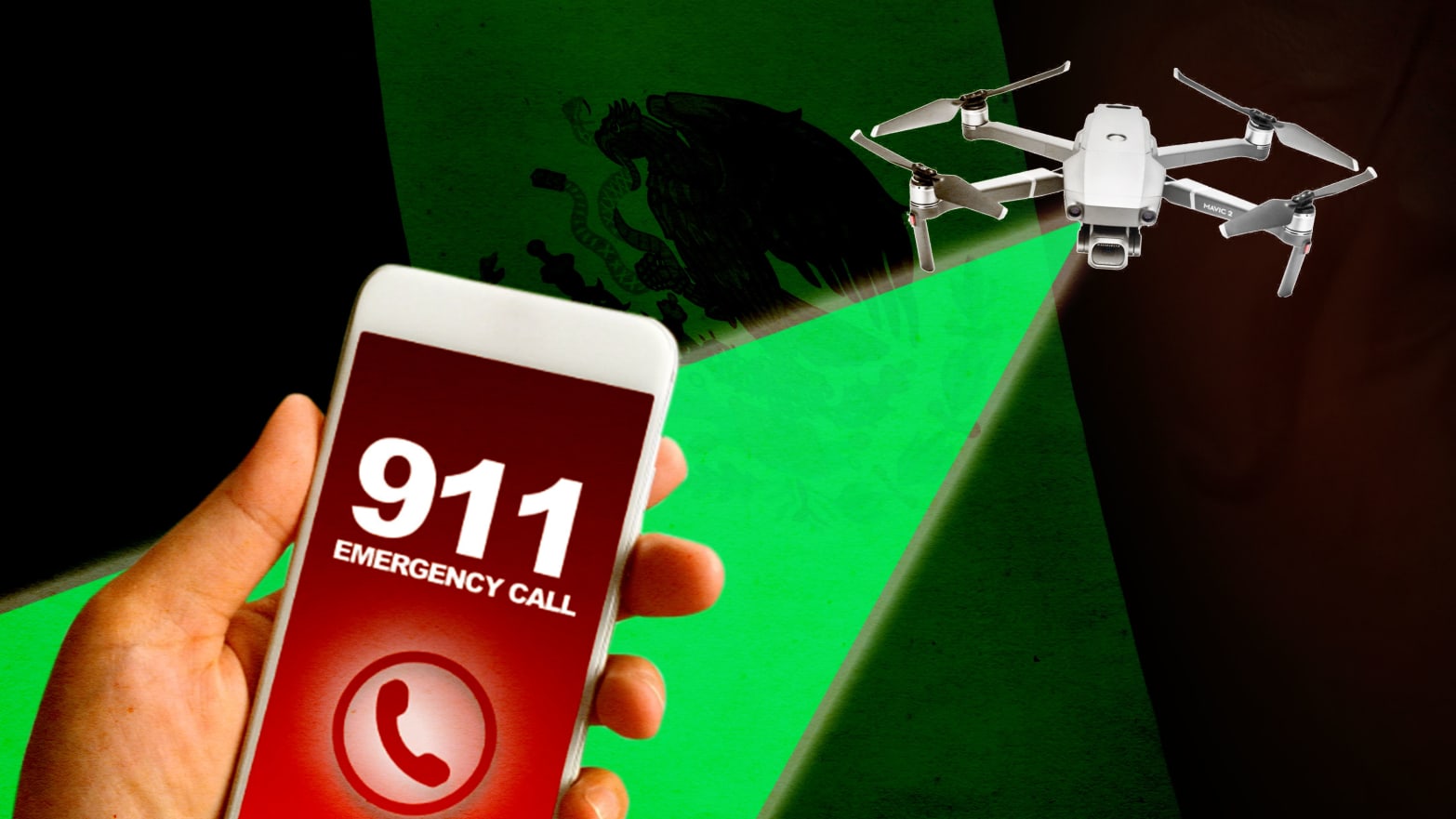Pretty soon, when a resident of Tijuana, Mexico, calls the police, the first responder might not be a man or woman wearing the Department of Public Safety’s midnight-blue uniform.
It might be a drone. And that could cause some people to worry.
Tijuana, a city of 1.3 million people just south of the U.S.-Mexico border, announced in late May that it had hired California tech firm Cape to help it operate two small quadcopter-style drones from the city’s police headquarters.
If the experiences of other cities are any indication, the Tijuana police-drones could chase fleeing suspects and use their cameras to gather evidence, among other law-enforcement duties.
Most importantly, they could get to the source of a call quicker than a patrol car.
Drones are “a fast way to get eyes on an emergency scene,” Barry Friedman, a law professor at New York University, told The Daily Beast.
In that way, they’re like police helicopters, but cheaper and quicker to deploy. A high-end quadcopter costs just a few thousand dollars to buy, and requires just one trained operator.
“We have seen the benefits of drone use for public safety first-hand, and are extremely proud to be at the forefront of adopting the technology,” Marco Antonio Sotomayor Amezcua, Tijuana’s secretary of public safety, said in a statement to the Association of Unmanned Vehicle Systems International, a drone trade group.
Tijuana’s Unmanned Aerial Vehicles (UAVs) are the first in Mexico. But they likely won’t be the last. More and more police departments across North America, and the world, operate their own law-enforcement drones.
In 2018, Chula Vista, the U.S. city of 270,000 just across the border from Tijuana, teamed up with Cape to integrate quadcopters into the local police force. Since the program’s launch in October 2018, according to Cape, Chula Vista’s UAVs have assisted in 72 arrests.
Once Tijuana has its own drones, the two municipalities will form a sort of international supercity of robotic policing. The Tijuana department of public safety declined to comment for this story.
As cop-drones proliferate, so do critics of the technology. Protesters succeeded in blocking early efforts by departments in Seattle and Los Angeles to deploy UAVs for police work.
Critics fear the erosion of citizens’ privacy. “Drones concern many people as a sort of Big Brother ‘eye in the sky,’” Friedman explained.
“Early adopters of this new technology have discovered a painful truth,” experts warned in a 2016 study commissioned by the U.S. Justice Department. “Where law-enforcement leaders see a wonderful new tool for controlling crime and increasing public safety, a portion of the public sees the potential for a massive invasion of privacy.”
Anti-drone activists also worry that police might arm their UAVs and turn communities into war zones. “In the public mind, the type specimen of unmanned aircraft systems is the military drone, able to hover for days, spying indiscriminately and conducting missile strikes without warning,” the DOJ-sponsored study pointed out.
The Tijuana drones are unarmed. Most American police drones are also unarmed, although North Dakota in 2015 passed a law allowing police in the state to equip UAVs with non-lethal weaponry such as pepper spray or guns firing rubber bullets.
In the United States, arming a law-enforcement drone with lethal weaponry could violate the constitutional ban on the use of military force in domestic policing, the DOJ study noted.
In appears that in practice, police in the United States and Mexico at present aren’t really interested in deploying killer drones. Instead, they want UAVs for their cameras, their speed and ability to fly over traffic and buildings.
“With responding officers able to view the drone’s livestream en route to the scene, they gain full situational awareness that was previously not possible, allowing teams to better plan their approach and preparing them for any potential danger they face upon arrival,” Chris Rittler, the CEO of Cape, told The Daily Beast.
Drones are expendable. In October 2013 in Arlington, Texas, a man shot and killed someone in an apartment parking lot then barricaded himself inside the building, according to a department report the DOJ study cites.
The shooter had a clear view of the area through a window, so the responding cops sent a drone first. “Our SWAT team was able to collect vital intelligence without going into harm’s way,” the department reported.
Rittler told The Daily Beast his company is modeling Tijuana’s police-drone protocols on the system the company set up for neighboring Chula Vista. The drone operators will work from the police headquarters. The two police-’bots will take off from the building’s roof.
In Chula Vista, the police dispatch drones only on “high-priority calls” for a maximum of 10 hours per day, four days a week, Rittler said. In the first few months of Chula Vista’s drone program, the Federal Aviation Administration required the city’s drones at all times to remain within view of their operators, which limited their range to just a few miles.
In early 2019 the FAA granted the Chula Vista police department a waiver to fly drones beyond their operators’ line of sight, greatly expanding the area over which they can operate. Mexico’s own drone regulations require operators to keep their UAVs in view.
Tijuana public-safety secretary Amezcua said his city’s cop-drones could become the model for robotic policing throughout Mexico. “We look forward to seeing the impact the program has on our city and to serving as an example for other agencies across the country,” he stated.
Friedman has some advice for the city as it begins deploying UAVs as first-responders. “The way to do that,” Friedman said, “is with a sound policy for drone operations that limits where and how the drones are used [and] limits the recording time and retention of data to only what is necessary to deal with the emergency.”

